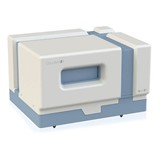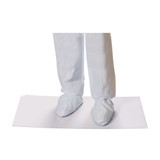UCI neurobiologist Hans Keirstead and colleagues at the Reeve-Irvine Research Centre found that rats, with either mild or severe spinal cords injuries, that were transplanted with a treatment derived from human embryonic stem cells suffered no visible injury or ill effects as a result of the treatment itself.
Furthermore, the study confirmed previous findings by Keirstead's lab - since replicated by four other laboratories around the world - that replacing a cell type lost after injury improves the outcome after spinal cord injury in rodents.
"Establishing the safety of implanted embryonic stem cells is crucial before we can move forward with testing these treatments in clinic trials," said Keirstead, an associate professor of anatomy and neurobiology and co-director of UCI's Stem Cell Research Centre. "W must always remember that a human clinical trial is an experiment and, going into it, we need to assure ourselves as best as we can that the treatment will not cause harm. This study is an important step in that direction.
In 2005, Keirstead's lab was the first to coax human embryonic stem cells to become highly pure specialised cells known as oligonderocytes. These cells are the building blocks of myelin, which acts as insulation for nerve fibres and is critical for maintenance of electrical conduction in the central nervous system. When myelin is stripped away through disease or injury, paralysis can occur.
In this study, as in the original one, when the rats suffering from severe spinal cord injury were injected with the oligodendrocytes seven days after injury, the cells migrated to the appropriate sites within the spinal cord and wrapped around the damaged neurons, forming new myelin tissue.
By contrast, the rats who were only mildly impaired showed no increase or decrease in myelin generation, and no change in their walking ability after transplantation. According to Keirstead, the injury was so minor that no loss of myelin occured. Therefore, a treatment based on remyelination would have no effect and the animals received motor function on their own. More importantly, while the treatment did not help with functinal recovery, it also did not impair it. Upon further examination, the scientists found no damage to the tissues surrounding the spinal cord indicating that the transplantation has not caused any damage to the animals.
"Our biggest safety concern was that in the case of a severe injury, any harm the stem cell-derived treatment could cause would be mased by the injury itself," Keirstead said. "In this study, we can see in animals that are only slightly injured that the transplantation does not cause visible harm and the injury is not hiding any damage the cells may have caused to the spinal cord or the surrounding tissue."
Keirstead is working with Geron Corp. to bring this treatment for acute spinal cord injury into Phase I clinical trials within the next year.
Frank Cloutier, Monica Siegenthaler and Gabriel Nistor collaborated on the study, which was supported by Geron Corp.; a UC Discovery Grant; the Roman Reed Spinal Cord Injury Research Fund of California; Research for Cure; and individual donations to the Reeve-Irvine Research Centre.
UCi is a premier centre for stem cell research in California. The university announced last week that it had received a $10 million gift from Bill and Sue Gross in support of stem cell research, including matching funds to construct an $80 million Stem Cell Research Centre facility.
- Suppliers
- New to MedicalSearch? Book a Demo
- Advertise with us
- Login
- Email Marketing
- Buyers
- Get Quotes
- Articles & Ideas
- Login
- Subscribe to newsletter
- My Details
- Get Quotes
- Accident & Emergency Care
- Aged Care & Disability
- Anaesthesia & Respiratory Care
- Beauty & Wellness
- Cardiology & Cardiac Surgery
- Commercial Cleaning & Laundry Supplies
- Dental Care & Oral Surgery
- Diagnostic Instruments & Medical Imaging
- Disinfection & Sterilisation
- ENT & Audiology
- Gynaecology & Obstetrics
- Homecare & Consumer Medical
- Hospital Equipment & Supplies
- Intensive Care Unit
- Laboratory & Pathology
- Medical Apparel
- Medical Devices & Products
- Medical Fridges & Freezers
- Medical Storage & Filing
- Medical Waste Management
- Optometry & Ophthalmology
- Orthopaedics & Podiatry
- Paediatrics & Neonatology
- Patient Monitoring & Management
- Physiotherapy & Rehabilitation
- PPE & Infection Control
- Single Use Medical Consumables
- Surgical Tools & Supplies
- Treatment Beds, Tables & Couches
- Veterinary Equipment
- Wheelchairs & Mobility Aids
- Get Quotes
- Accident & Emergency Care
- Aged Care & Disability
- Anaesthesia & Respiratory Care
- Beauty & Wellness
- Cardiology & Cardiac Surgery
- Commercial Cleaning & Laundry Supplies
- Dental Care & Oral Surgery
- Diagnostic Instruments & Medical Imaging
- Disinfection & Sterilisation
- ENT & Audiology
- Gynaecology & Obstetrics
- Homecare & Consumer Medical
- Hospital Equipment & Supplies
- Intensive Care Unit
- Laboratory & Pathology
- Medical Apparel
- Medical Devices & Products
- Medical Fridges & Freezers
- Medical Storage & Filing
- Medical Waste Management
- Optometry & Ophthalmology
- Orthopaedics & Podiatry
- Paediatrics & Neonatology
- Patient Monitoring & Management
- Physiotherapy & Rehabilitation
- PPE & Infection Control
- Single Use Medical Consumables
- Surgical Tools & Supplies
- Treatment Beds, Tables & Couches
- Veterinary Equipment
- Wheelchairs & Mobility Aids
Trusted by 520,000 Australian medical buyers
Buyers
- Discover products & solutions
- Login
- Subscribe To Newsletter
- Browse All Products
- Read Articles
Suppliers
Advertise
- Promote your products & solutions
- New to MedicalSearch? Book a Demo
- Login / Forgot Password
- Advertise Your Products
- Success Stories
- Email Marketing
- Suppliers
- Advertise with us
- Login
- Email Marketing
- Buyers
- Get Quotes
- Articles & Ideas
- Login
- Subscribe to newsletter
- My Details
Get Quotes
- Accident & Emergency Care
- Aged Care & Disability
- Anaesthesia & Respiratory Care
- Beauty & Wellness
- Cardiology & Cardiac Surgery
- Commercial Cleaning & Laundry Supplies
- Dental Care & Oral Surgery
- Diagnostic Instruments & Medical Imaging
- Disinfection & Sterilisation
- ENT & Audiology
- Gynaecology & Obstetrics
- Homecare & Consumer Medical
- Hospital Equipment & Supplies
- Intensive Care Unit
- Laboratory & Pathology
- Medical Apparel
- Medical Devices & Products
- Medical Fridges & Freezers
- Medical Storage & Filing
- Medical Waste Management
- Optometry & Ophthalmology
- Orthopaedics & Podiatry
- Paediatrics & Neonatology
- Patient Monitoring & Management
- Physiotherapy & Rehabilitation
- PPE & Infection Control
- Single Use Medical Consumables
- Surgical Tools & Supplies
- Treatment Beds, Tables & Couches
- Veterinary Equipment
- Wheelchairs & Mobility Aids
Get Quotes
- Accident & Emergency Care
- Aged Care & Disability
- Anaesthesia & Respiratory Care
- Beauty & Wellness
- Cardiology & Cardiac Surgery
- Commercial Cleaning & Laundry Supplies
- Dental Care & Oral Surgery
- Diagnostic Instruments & Medical Imaging
- Disinfection & Sterilisation
- ENT & Audiology
- Gynaecology & Obstetrics
- Homecare & Consumer Medical
- Hospital Equipment & Supplies
- Intensive Care Unit
- Laboratory & Pathology
- Medical Apparel
- Medical Devices & Products
- Medical Fridges & Freezers
- Medical Storage & Filing
- Medical Waste Management
- Optometry & Ophthalmology
- Orthopaedics & Podiatry
- Paediatrics & Neonatology
- Patient Monitoring & Management
- Physiotherapy & Rehabilitation
- PPE & Infection Control
- Single Use Medical Consumables
- Surgical Tools & Supplies
- Treatment Beds, Tables & Couches
- Veterinary Equipment
- Wheelchairs & Mobility Aids
Trusted by 520,000 Australian medical buyers








